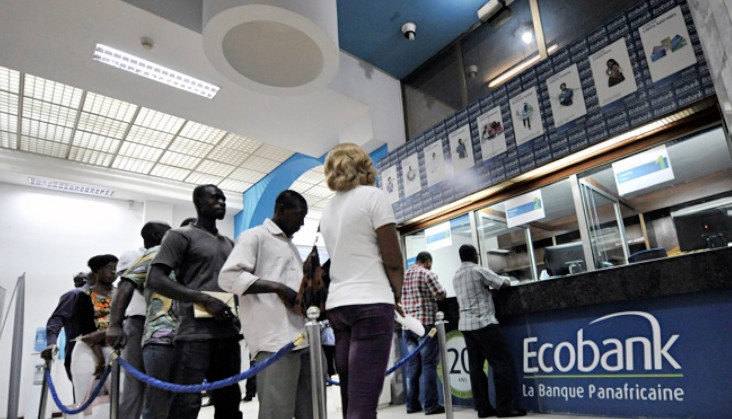Ghana’s banks are preparing for trouble as oil prices remain low and the electricity crisis continues, but Côte d’Ivoire’s are set to keep growing on the back of the economy’s post-conflict boom. In Ghana, the level of non-performing loans (NPLs) has been rising since 2014, from 11.2% in December to 14.1% in November 2015. For their part, Ivorian banks have been attracting international investment, and the sector could receive a boost as the government follows through on its oft-delayed plans for privatisations.
The Africa Report‘s Top 200 banks ranking (Finance Edition, Oct-Dec 2015) shows that Ghana and Côte d’Ivoire’s banking sectors are fairly matched. Each had eight banks in the Top 200. Ivorian banks, with total assets of $9.3bn, were just ahead of Ghanaian banks, with $9.2bn.
Although the country’s asset bases are similar, Ivorian banks in the Top 200 devoted more money to loans – $5.2bn in 2014, compared with Ghana’s $3.8bn – and had higher deposit levels – $7bn over the same period, compared with $6.1bn.
Ups and downs
The region’s banks are now heading in different directions. In Ghana, the cedi’s depreciation, the government’s recourse to an International Monetary Fund bailout and low prices for oil and gold exports all create a gloomy picture.
The global ratings agency Moody’s downgraded leading locally owned GCB Bank’s deposits and gave it a negative outlook in 2015 because about half of its assets are tied up in loans, treasury bills and other instruments linked to the central government.
Analyst John Opoku, who specialises in banking in the Economic Community of West African States, tells The Africa Report: “I am confident that going forward NPLs will rise […] in 2016 due to slower gross domestic product growth and a weaker commodity sector, particularly in oil and mining.”
The Monetary Policy Committee of the Bank of Ghana recently maintained its tight stance in order to help the economy onto a firmer footing by keeping its policy interest rate at 26%. It cited the slower pace of price changes and its desire to steer inflation down towards the medium target band of around 8%.
Banks have reacted by holding back on lending, with growth of credit to the private sector dropping from 26.6% in September 2014 to 3.6% in September 2015, according to the Bank of Ghana. Across the border, the Ivorian government is in the midst of a privatisation campaign for troubled state-owned banks. It announced its intentions to sell its 67% stake in Versus Bank for €47m ($52.8m) in 2015 but has made little progress in finding a buyer.
The next bank on offer is Banque de l’Habitat de Côte d’Ivoire, which specialises in mortgage lending and is owned 55.9% by the state. With the sale, the government wants the financial institution to become a universal bank.
Private sector banks have been better at attracting investment, especially from abroad. In March 2015, Amethis Finance and Canada’s Banque Nationale bought a 21% stake in Groupe NSIA, which in addition to its insurance business also includes NSIA Banque, formerly BIAO-CI. Dumps shop
There is little banking cooperation and cross-border investment between the two West African neighbours. None of the top banks majority owned by local interests – GCB Bank and NSIA Banque – have operations in the other country.
Most of the banks with operations in both countries are subsidiaries of major African banks or their European competitors. They include Togo-based Ecobank, Nigeria’s United Bank for Africa (UBA), France’s Société Générale and Mali-based Bank of Africa. Over the past several years, Nigerian banks – like Access Bank and UBA – have had more success in Ghana than in Côte d’Ivoire because of management problems and weaker ties between Nigeria and Côte d’Ivoire.
There is still huge potential for banking growth in both countries. According to the World Bank’s Financial Development Database, there were just 470 deposit accounts in commercial banks per 1,000 people in Ghana in 2013 and 197 per 1,000 in Côte d’Ivoire. ●

